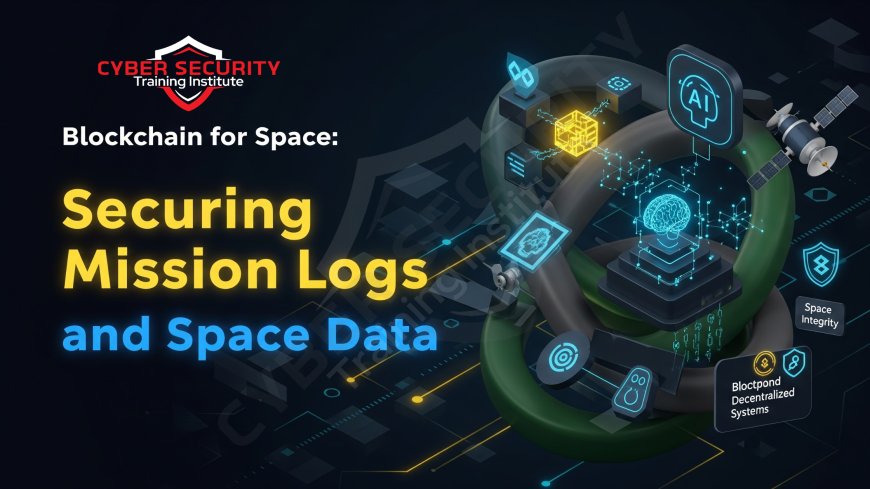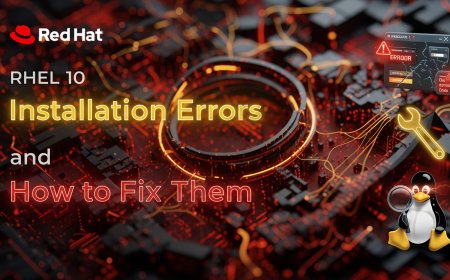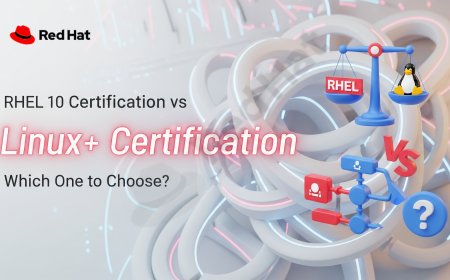Blockchain for Space | Securing Mission Logs and Space Data
In the vast, unforgiving expanse of space, every piece of data is precious. From a mission's launch trajectory to the scientific findings from a distant planet, this information is the lifeblood of space exploration. But in an era of sophisticated cyber threats, ensuring the integrity and authenticity of this data is a monumental challenge. Space agencies and private companies face a constant barrage of attacks, with adversaries seeking to disrupt missions, steal valuable intellectual property, or manipulate data for strategic advantage. This is where a seemingly terrestrial technology—**blockchain**—emerges as a potential game-changer. Beyond its association with cryptocurrencies, blockchain offers a revolutionary way to create an unchangeable, verifiable record of events. By leveraging its decentralized and cryptographic nature, we can fundamentally transform how we secure mission logs, satellite telemetry, and scientific data, bringing a new level of trust and resilience to the final frontier. This blog post explores the critical role blockchain can play in safeguarding space assets and data, from the moment a rocket leaves the launchpad to the final transmission of a deep-space probe.

Table of Contents
- Introduction
- The Challenge of Securing Space Data
- Blockchain 101: A Primer for Space Enthusiasts
- Applications of Blockchain in Space Cybersecurity
- Real-World Examples and Pilot Programs
- Challenges and Limitations of Blockchain in Space
- The Future Outlook: From Concept to Reality
- Conclusion
- Frequently Asked Questions (FAQs)
The Challenge of Securing Space Data
The space industry generates an enormous amount of data, from the real-time telemetry that tracks a satellite's health to the vast datasets from Earth observation and deep-space missions. This data is highly sensitive and valuable. An adversary could:
- Manipulate Mission Logs: An attack could alter a spacecraft's command history or telemetry data, making it difficult to diagnose a problem or verify an action.
- Steal Intellectual Property: Design specifications for a satellite, propulsion systems, or new payloads are incredibly valuable. A data breach could compromise a nation's technological edge.
- Fabricate Data: An attacker could inject false data into a scientific or reconnaissance stream, leading to incorrect conclusions or misinformed decisions.
- Disrupt Operations: Corrupting a mission's data could cause a critical failure, jeopardizing the mission and potentially creating dangerous space debris.
Traditional cybersecurity measures, while essential, can be vulnerable to sophisticated attacks. The centralized nature of many data systems makes them a single point of failure. If an attacker gains access to a central database, they can potentially alter a vast amount of information without being detected. This is a problem blockchain is uniquely suited to solve.
Blockchain 101: A Primer for Space Enthusiasts
At its core, a blockchain is a **decentralized, distributed, and immutable digital ledger**. Think of it as a chain of blocks, where each block contains a list of records or transactions. Key concepts to understand are:
- Blocks: Each "block" contains a batch of data, like a log of commands sent to a satellite.
- Chain: Each block is cryptographically linked to the one before it using a unique digital signature called a **hash**. If any data in a block is changed, its hash changes, breaking the chain and immediately alerting everyone on the network.
- Decentralization: The ledger is not stored on a single server but is distributed across a network of computers. This makes it incredibly difficult for a single actor to alter the data, as they would have to simultaneously hack every computer on the network.
- Consensus: Before a new block can be added to the chain, all or most of the computers on the network must agree that the data is valid. This consensus mechanism prevents malicious or incorrect data from being added.
This combination of cryptography, decentralization, and consensus creates a system that is tamper-proof and provides an unchangeable record of events—a perfect fit for the high-stakes world of space data.
Applications of Blockchain in Space Cybersecurity
Securing Mission Logs and Telemetry
Every space mission, from a launch to an on-orbit operation, generates a detailed log of commands, sensor readings, and telemetry. These logs are crucial for mission control to understand what a spacecraft is doing and to troubleshoot any issues. By using a blockchain, every command sent to a satellite could be recorded as a transaction on the ledger. This creates an immutable history of the mission. If a hacker attempts to alter a command to cause a malfunction, the blockchain would instantly reveal the discrepancy. This provides a verifiable, tamper-proof record for post-mission analysis and incident response.
For example, if a satellite suddenly begins to drift off course, mission control could cross-reference the live telemetry with the blockchain log. If the log shows that a command was never sent to alter the course, it indicates an external force or a hardware malfunction, not a command-and-control breach. This speeds up the troubleshooting process and provides a higher level of assurance.
Ensuring Data Integrity and Trust
In a world of information warfare, the integrity of data is paramount. A space agency needs to be absolutely certain that the data it receives from a satellite is authentic and has not been altered. Blockchain can achieve this by:
- Timestamping Data: Every piece of data—whether it's an image from an Earth observation satellite or a scientific reading from Mars—can be timestamped and recorded on a blockchain. This provides a verifiable record of when the data was created, proving its authenticity.
- Immutable Record: Once the data's hash is on the blockchain, it cannot be changed. This provides a "single source of truth" that is tamper-proof. Researchers and analysts can rely on the data's integrity, knowing it has not been manipulated.
This is particularly important for sensitive applications like military intelligence or climate science, where the accuracy of the data is non-negotiable.
Supply Chain Security for Space Components
The supply chain for a satellite is incredibly complex, with thousands of components sourced from various vendors worldwide. A malicious actor could introduce a compromised component with a hidden backdoor, creating a major vulnerability. Blockchain can be used to create a transparent and secure ledger of the supply chain. Every component, from a single chip to an entire propulsion system, can be tracked on the blockchain. This creates a digital passport for each part, including its origin, a list of everyone who has handled it, and any testing it has undergone. This provides an auditable, end-to-end record that prevents the introduction of counterfeit or compromised parts.
Decentralized Satellite Networks
The majority of today's satellite constellations rely on centralized ground stations. This creates a single point of failure; a successful cyberattack on a single ground station can disrupt an entire network. Blockchain can facilitate a decentralized network of satellites that can communicate directly with each other and with multiple ground stations. In such a system, there is no single point of failure. If one ground station is compromised, other nodes in the network can take over, ensuring continuous operation. This concept, often called a **"space blockchain,"** would make a network more resilient and difficult for an adversary to take down.
Table: How Blockchain Addresses Space Data Security Challenges
| Challenge | Blockchain Solution | Benefit |
|---|---|---|
| Data Tampering | Immutable, cryptographic ledger. | Guarantees data has not been altered since its creation. |
| Centralized Vulnerabilities | Decentralized and distributed network. | Eliminates a single point of failure, making the system more resilient. |
| Supply Chain Insecurity | Transparent, auditable ledger of components. | Prevents counterfeit parts and tracks every step of the manufacturing process. |
| Data Authenticity | Cryptographic timestamping. | Proves the data's origin and when it was created, building trust. |
Real-World Examples and Pilot Programs
The concept of using blockchain for space is not just theoretical. Several companies and organizations are already exploring its potential. For example, a company called SpaceChain has worked on pilot programs to launch blockchain nodes into orbit. These nodes can be used to run decentralized applications (dApps) in space and provide a secure, immutable record of data. Other initiatives are focused on using blockchain to manage satellite communication access, ensuring that only authenticated users can access a satellite's services. These early-stage projects demonstrate the growing recognition of blockchain's value in a space context.
Challenges and Limitations of Blockchain in Space
Despite its promise, blockchain in space faces significant challenges:
- Limited Processing Power: Satellites have limited onboard processing power and memory. The computational demands of blockchain's consensus mechanisms (like Proof of Work) may be too high for current satellite hardware.
- Bandwidth Constraints: Space-to-ground communication is limited. Transmitting a large number of transactions or the entire blockchain ledger can be slow and expensive.
- Latency: Communication delays between a satellite and a ground station can make it difficult to achieve real-time consensus on the blockchain.
- Regulation: The legal and regulatory frameworks for a "space blockchain" are non-existent. International cooperation will be required to develop norms and policies for such a system.
These challenges are not insurmountable but will require innovative solutions. The development of more efficient blockchain protocols (like Proof of Stake) and dedicated space-hardened hardware will be key to overcoming these hurdles.
The Future Outlook: From Concept to Reality
Looking ahead, the integration of blockchain and space technology is poised to grow. As space becomes more commercialized and more nations and private companies become space-faring, the need for robust, decentralized security will become even more critical. Future applications could include:
- Automated In-Space Transactions: Blockchain could be used for secure, automated transactions between satellites for services like data sharing or refueling.
- Verifiable Space Debris Tracking: A blockchain could create a verifiable, immutable record of every piece of space debris, aiding in collision avoidance and space traffic management.
- Smart Contracts for Space Commerce: Smart contracts could automate agreements between companies for satellite services or data purchases, ensuring transparency and trust.
The journey from concept to reality will be long, but the foundational principles of blockchain—trust, immutability, and decentralization—are perfectly aligned with the needs of the space industry.
Conclusion
In the new space race, the most valuable currency is not gold, but trust. The integrity of mission logs, the authenticity of scientific data, and the security of the supply chain are all non-negotiable for success. Blockchain, with its unique ability to create a tamper-proof, decentralized ledger, offers a powerful solution to these challenges. While the technology is still in its early stages of application in a space context, its potential to revolutionize how we secure mission logs and space data is immense. By moving beyond a single point of failure and embracing a distributed system of trust, we can build a more resilient and secure space ecosystem. The final frontier is becoming more accessible than ever, and with that accessibility comes a greater need for security. Blockchain provides the tools to build that security, ensuring that as humanity ventures further into the cosmos, our data remains as pristine and trustworthy as the stars themselves.
Frequently Asked Questions (FAQs)
What is blockchain?
A blockchain is a decentralized, distributed, and immutable digital ledger that uses cryptography to create a secure chain of records, or "blocks."
Why is blockchain for space a new concept?
While blockchain has been around for a while, its application in space is new because the unique challenges of space (e.g., latency, limited bandwidth) have made it difficult to implement. However, as the technology evolves, its potential is becoming more apparent.
How does blockchain prevent data tampering?
Each block in a blockchain is cryptographically linked to the one before it using a unique digital signature (a hash). If any data is changed, the hash changes, breaking the chain and alerting everyone on the network to the alteration.
What is the difference between a centralized and a decentralized network?
A centralized network has a single server or authority controlling all data, creating a single point of failure. A decentralized network distributes the data across multiple computers, making it more resilient to attack.
How can blockchain secure a satellite's supply chain?
Blockchain can create a transparent and auditable ledger that tracks every component from its origin to its installation in a satellite. This makes it difficult to introduce counterfeit or malicious parts.
What is telemetry data and why is it important to secure it?
Telemetry data is the real-time information sent from a spacecraft to a ground station about its health and status. Securing it is critical to prevent an adversary from manipulating it to cause a mission failure or to hide a malfunction.
Can blockchain be used for real-time data from a mission?
While the latency in space communication makes true real-time blockchain difficult, it can be used to timestamp and verify batches of data, providing an immutable record for later analysis.
What is the "consensus mechanism"?
The consensus mechanism is the process by which all the computers on a decentralized network agree on the validity of a transaction before it is added to the blockchain. This prevents malicious actors from adding false data.
Why is limited processing power a problem for blockchain in space?
Many blockchain consensus mechanisms, especially older ones, are computationally intensive. Satellites have limited onboard processing power, which can make it difficult to run these protocols efficiently in space.
What is a "space blockchain"?
A "space blockchain" is a conceptual decentralized network of satellites that can communicate and transact directly with each other, eliminating the need for a centralized ground station.
How can blockchain help in space traffic management?
A blockchain could create a verifiable, immutable record of every piece of space debris and every satellite's location, which would aid in collision avoidance and space traffic management.
What are "smart contracts"?
Smart contracts are self-executing contracts with the terms of the agreement directly written into code. In space, they could be used to automate transactions between satellites or for commercial services, ensuring transparency and trust without an intermediary.
Are there any companies already using blockchain for space?
Yes, companies like SpaceChain have launched blockchain nodes into orbit for pilot programs, exploring applications like decentralized data storage and in-orbit transactions.
How does a "hash" work in blockchain?
A hash is a unique digital fingerprint of a block of data. If even a single character in the block is changed, the hash changes completely, making it easy to detect any tampering.
Is blockchain a magic bullet for all space cybersecurity problems?
No, blockchain is not a magic bullet. It is a powerful tool that, when combined with traditional cybersecurity measures, can significantly enhance security. It's best used for ensuring data integrity and creating a tamper-proof record, not for all security issues.
How can blockchain help in ensuring data authenticity?
By timestamping data and recording its hash on the blockchain, you can create a verifiable record of when the data was created. This proves its authenticity and helps to build trust.
What is the future of blockchain in space?
The future includes the development of more efficient protocols for space, the use of blockchain for in-space transactions and smart contracts, and the creation of decentralized, resilient satellite networks.
Is it expensive to use blockchain in space?
The cost is a major consideration. The computational and bandwidth requirements of some blockchain protocols can be expensive and power-intensive, making them difficult to implement on current satellite hardware.
Could an adversary use blockchain to their advantage?
The decentralized and transparent nature of public blockchains makes it difficult for a single actor to use them maliciously. However, the technology could be used to build a malicious, private network that would be difficult to detect.
Why is immutability so important for space data?
Immutability, or the inability to be changed, is critical because the integrity of space data is non-negotiable. A tamper-proof record ensures that scientists, engineers, and government officials can rely on the data to make life-or-death decisions and draw accurate conclusions.
What's Your Reaction?
 Like
0
Like
0
 Dislike
0
Dislike
0
 Love
0
Love
0
 Funny
0
Funny
0
 Angry
0
Angry
0
 Sad
0
Sad
0
 Wow
0
Wow
0

















